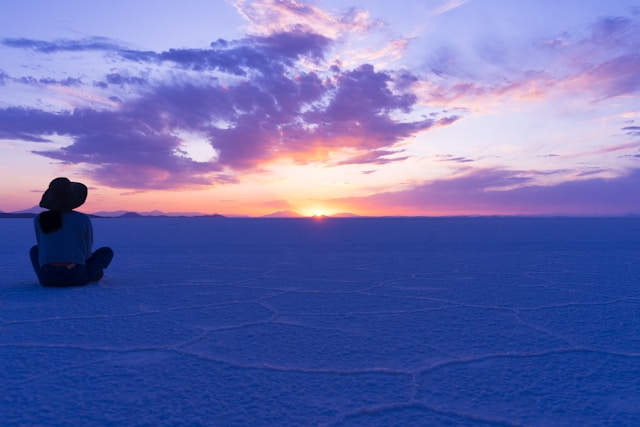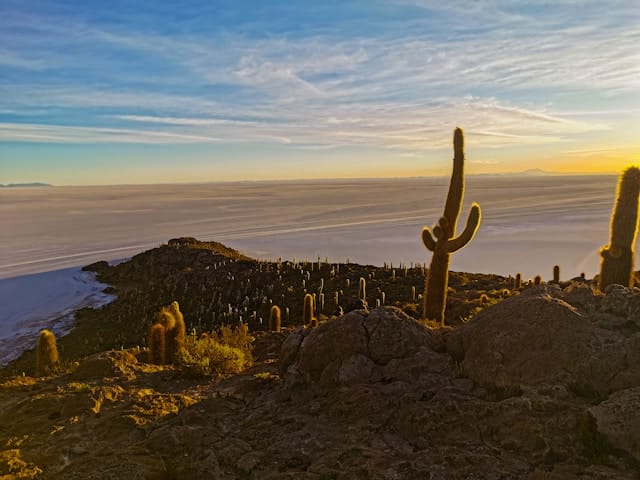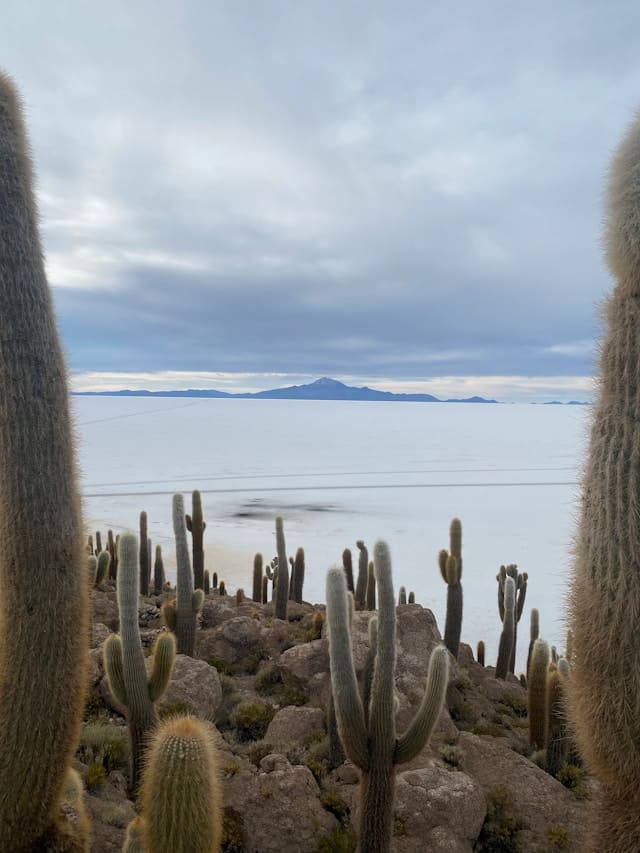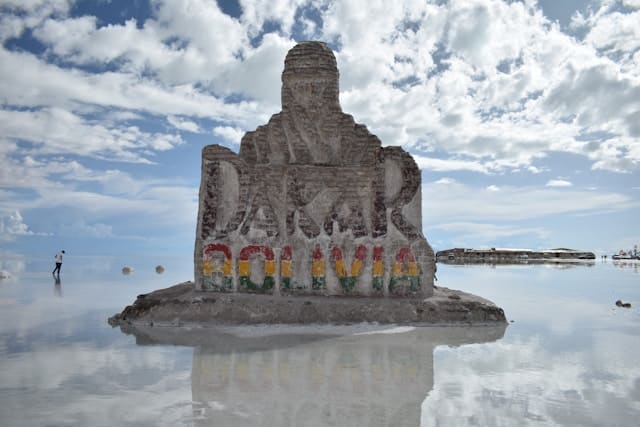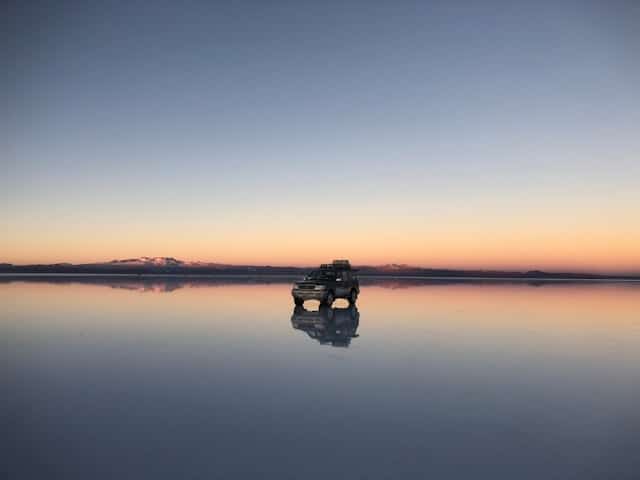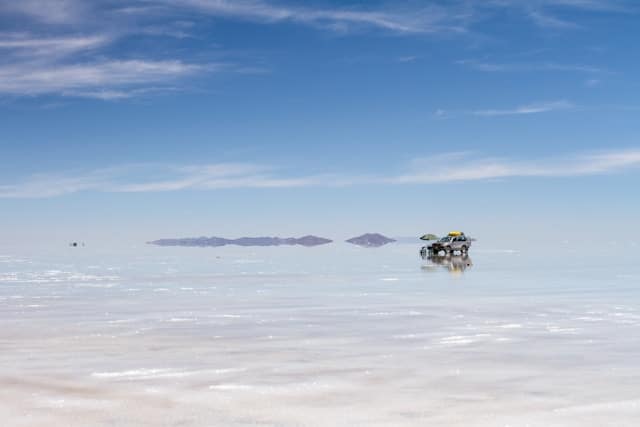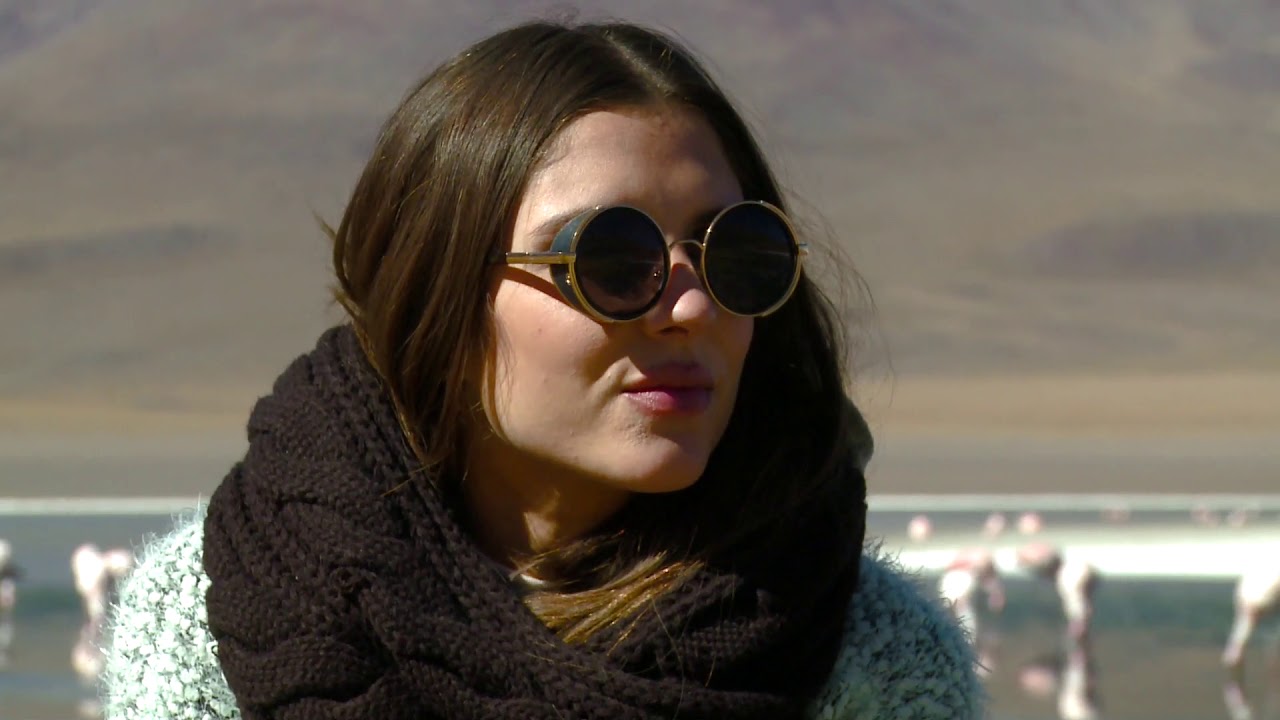Let me tell you a secret: the best time to visit Uyuni Salt Flats is both a simple answer and a complicated one. Simple, because it really boils down to two options: do you want the giant mirror of the rainy season or the cracked white desert of the dry one? Complicated, because whichever you choose, Uyuni will mess with your sense of reality.
I still remember the first time I stepped onto that endless sheet of white. The air was thin, the horizon blurred, and my brain kept asking: Am I standing on the earth or floating through the sky?
Feel Uyuni With All Your Senses
Uyuni is not just something you see — it’s something you feel. The crunch of salt beneath your boots, the sting of cold wind on your cheeks, the blinding reflection of the sky in every direction. At night, the silence is so complete you can hear your own heartbeat while the Milky Way burns above you. It smells of rain, of earth, of a world untouched. Touch the salt, taste the dry air, lose yourself in the horizon — every sense reminds you that this place is alive, and it wants to stay with you long after you’ve left.
Rainy Season: The World’s Biggest Mirror (December – March)
If you’ve seen those insane shots of people “walking on the sky,” that’s the rainy season. Between December and March, the flats flood just enough to create the mirror effect that made Uyuni world-famous. It’s surreal, unforgettable, and absolutely worth the hype.
But let’s get real: water can be a blessing and a curse. When the Salar floods too much, you can’t always cross it. Sometimes the surface becomes a shallow lake, cutting off access to certain areas. The famous Isla Incahuasi (Cactus Island) — usually a highlight — often becomes unreachable. Drivers reroute, distances double, and you spend more time bouncing around in a jeep than standing on the mirror.
Pros:
-
The legendary mirror effect, pure magic.
-
Warm nights compared to the dry season.
-
Photos that make people question reality.
Cons:
-
Flooded roads → you can’t always cross the Salar.
-
Access to Isla Incahuasi often closed.
-
Logistics are tougher, rides bumpier, tours more limited.
Dry Season: A White Desert on Steroids (April – November)
Come in the dry months and you’ll meet a different Uyuni. No mirrors. No reflections. Just a white desert that looks like someone spilled the world’s largest bag of salt.
The ground fractures into perfect hexagons, like nature’s own geometry class. You can walk for hours and hear nothing but the crunch of salt under your boots. And when night falls? The Milky Way explodes above you, so sharp it feels like you could reach up and grab a star.
Pros:
-
Easy access to all areas, including Isla Incahuasi.
-
Epic stargazing thanks to clear skies.
-
Safer logistics, smoother tours.
Cons:
-
Nights drop below freezing.
-
No mirror effect.
The Ugly true about Budget Tours in Uyuni
So, What’s the Best Time to Visit Uyuni Salt Flats?
That’s the million-dollar question. The truth: there’s no wrong season — only the one that fits your expectations.
-
January–February: Peak mirror effect. Crowded, wet, unforgettable.
-
July–August: Cold as hell, but the stargazing will blow your mind.
-
October–November: The sweet spot, with decent weather and fewer crowds.
👉 The best time to visit Uyuni Salt Flats depends on whether you’re chasing the mirror or the stars.
The Road from Atacama
For the full pilgrimage, start in San Pedro de Atacama, Chile. Three days later you’ll stumble into Uyuni, dazed and in love. Along the way, you’ll pass volcanic deserts, emerald lagoons, geysers spitting sulfur, and flocks of flamingos looking like bored runway models.
Do it private. Do it slow. Do it with a driver who knows the road. Because trust me, this is not the place where you want your jeep to break down.
Notes from the Road (Survival Tips)
-
Book ahead in rainy season.
-
Dress in layers: warm clothes for nights, light ones for days, waterproofs for the mirror.
-
Bring cash — ATMs are scarcer than bathrooms.
-
Altitude is no joke: hydrate and pace yourself.
-
Extra batteries — cold drains them fast.
Why We Go
Travel isn’t just about ticking boxes. It’s about letting a place change you. Uyuni does that better than most.
At Pie Experiences, we’ve built tours that aren’t about rushing or cutting corners. They’re about slowing down, soaking it in, and leaving with stories worth telling.
-
3-Day Atacama to Uyuni Adventure (Private): The ultimate cross-border journey.
-
2D/1N Uyuni Salt Flats Tour: Short, intense, unforgettable.
-
Uyuni Stargazing Experience: Because some skies are too beautiful not to sleep under.
👉 Plan your Uyuni trip with us.
Final Thoughts
Uyuni doesn’t care about your comfort. It will freeze you, flood you, dazzle you, and leave you humbled.
The best time to visit Uyuni Salt Flats isn’t about chasing perfect weather. It’s about deciding whether you want to walk across the sky or sleep under galaxies you didn’t know existed.
Either way, you’ll never forget it.
FAQs – Real Traveler Questions about best time to travel to Uyuni Salt flats
Where is Uyuni Salt Flats located?
Southwest Bolivia, in the Potosí region.
How do you get to Uyuni Salt Flats from Peru?
From Puno, go to La Paz, then fly or bus to Uyuni.
What’s the closest city?
Uyuni town. Dusty but the launchpad to the flats.
Which airport is closest?
Uyuni’s Joya Andina Airport (UYU).
What’s the best time to visit Uyuni Salt Flats?
Rainy season (Dec–Mar) for the mirror, dry season (Apr–Nov) for stars and access.
Can I visit Isla Incahuasi year-round?
Not always — in rainy season, the island is often inaccessible due to flooding.
Is it cold in Uyuni?
Yes. Even in summer, nights are chilly. In winter, brutal.
What should I wear?
Layers, waterproof boots in rainy season, trekking shoes in dry.
What should I pack?
Sunscreen, sunglasses, snacks, water, and patience.


